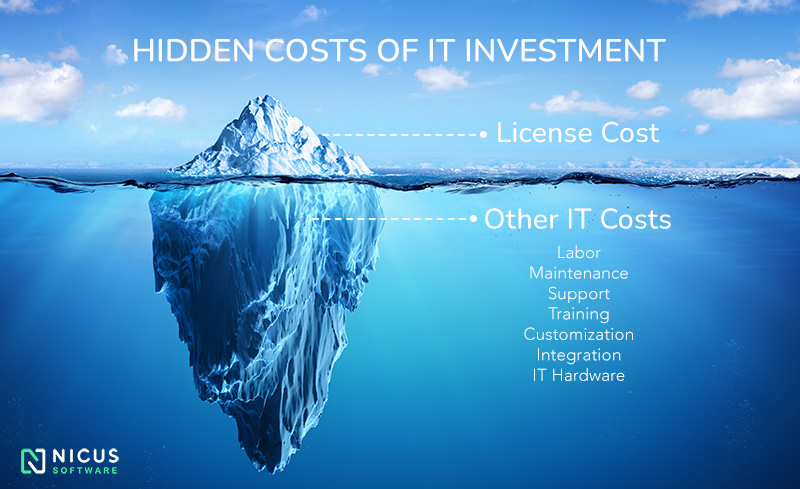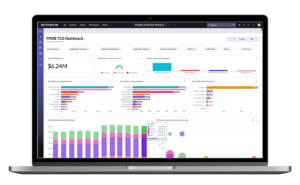Former GM chairman Roger Smith once famously said, “If I had all the money I spent on IT back, I could have bought Toyota and Nissan outright.”
There’s no question that GM can’t produce a single vehicle without IT. Smith’s quote, however, highlights the fact that while Smith knows how much it would cost to buy Toyota and Nissan, he has no idea what value those IT dollars delivered to his company.
It’s a common blind spot in many organizations today, and one that poses a huge risk for CIOs needing to demonstrate IT value and efficiency.
The key to eliminating this blind spot is IT financial management (ITFM), and is just one of several reasons why CIOs need to prioritize ITFM.
Download your free eBook on Dispelling the 8 Biggest ITFM & TBM Misconceptions
1. CIOs Who Get ITFM Right Have a Longer Tenure
Organizations go through cycles with CIOs. There are two bookends in this cycle: the technical CIO and the cost-cutting CIO.
The technical CIO comes into the company and creates a world-class IT program. The internet never goes down, applications always stay up—everything you want technology to deliver.
Of course, this is expensive, so in a few years, the technical CIO is out and a new CIO is brought in to cut costs. The cost-cutting CIO starts hacking away, slashing dollars and putting in plugs as needed, taking costs down 20%.
What happens next is fairly predictable: things start to break. The internet is unreliable, applications go down and the network stops functioning. So, the company gets rid of that CIO and brings in another technical CIO, and the cycle continues forever.
The ones who have the longest tenure of all, however, are those who are savvy about ITFM. That’s because these people aren’t just good at managing finances, but also the insights and storyline hidden in the data.
2. ITFM Connects the Dots Between Technology Spending and Business Priorities
CIOs have the hardest position in the company because they need to have one foot set firmly in the industry of technology and one foot in the business.
The CIO of an insurance company, for example, needs to be able to talk to business presidents about trade combined ratio (TCR), while the CIO in the banking industry needs to be able to talk to leadership about efficiency ratios. On top of that, both need a deep understanding of the constantly changing technology marketplace.
At the end of the day, ITFM is the only thing on the planet that connects the two simultaneously, allowing you to talk to your boss in terms that matter to them outside of budget alone.
ITFM tells you not just the costs of standing up a new technology, but also the value it delivers. ITFM also connects the dots on whether or not the business should, for example, turn off the technology, based on how they’re operating and what their strategy is.
3. The General Ledger Wasn’t Built for Optimizing IT Spend
The vast majority of companies approach IT spending from a traditional financial planning and analysis (FP&A) view centered on the general ledger. It’s critical to recognize, however, that the general ledger was built for tax purposes and for projecting profits and losses—not for optimizing IT spend.
Decisions to stand up a new application manifest in the general ledger as expenses like salary, travel, training and hardware, but that’s not a valid strategy for decisioning new projects. A cost model is also necessary so that, regardless of where those dollars sit in the ledger, you can see the true total cost of ownership (TCO) for the application.

If you ask someone, for instance, how much a given application costs, they typically only know how much the licensing is. So while they may think the application only costs $50,000 to run, in reality the true cost is closer to $1M when you factor in labor and other expenses.
4. ITFM Is the Key to Being Proactive and not Reactive
When finance organizations are looking to cut costs, they tend to start with obvious expenses like travel, training and consultants. This reactive approach, however, only shows that they don’t understand where they’re spending money or what they are getting for it.
ITFM allows companies to adopt a more proactive stance by intelligently identifying where they can cut costs without impacting the delivery model.
ITFM software like Nicus, for example, allows you to tag costs by both influence and impact. Influence refers to those levers that can be pulled immediately to reduce costs, while impact refers to the effect they will have on IT delivery.

High influence, low impact levers represent the low-hanging fruit where you can make cuts for quick savings that have minimal effect on operations. ITFM software gives you the answer automatically, so you can spend more time delivering actionable insights to leadership and less time crunching numbers.
Getting ITFM right should be a top priority for CIOs, and not just because it means they’re likely to last longer in their roles. By empowering them with insights and not just data, ITFM gives them the tool to make a lasting impact based on what matters most in the organization.
Download your free eBook on 4 Steps to a Healthier ITFM Practice Beyond Spreadsheets






